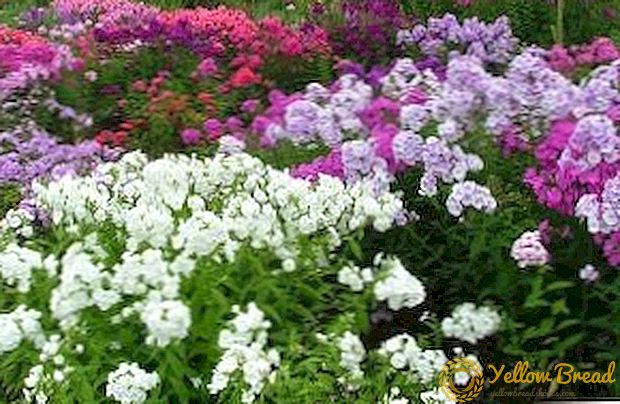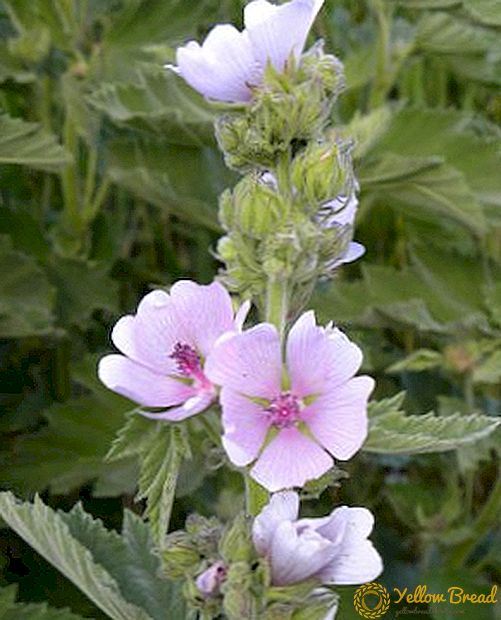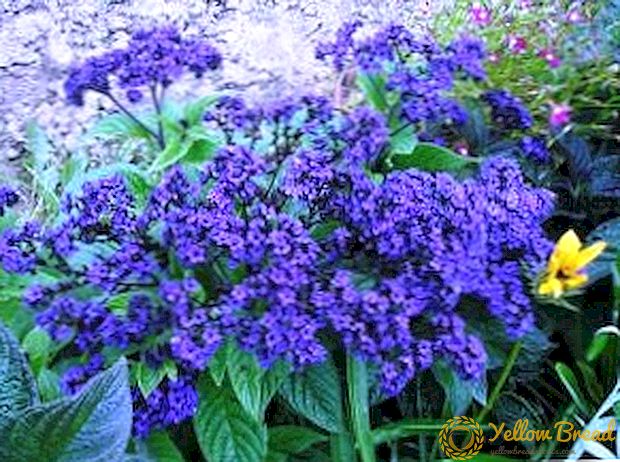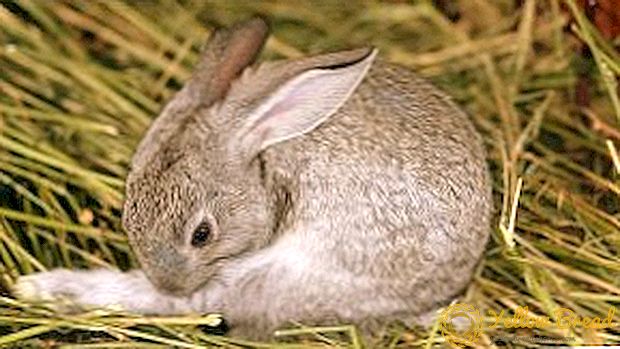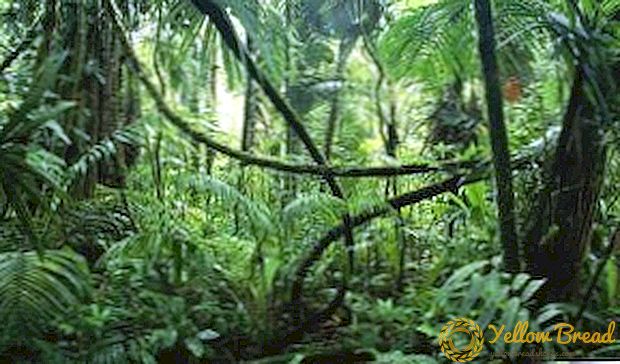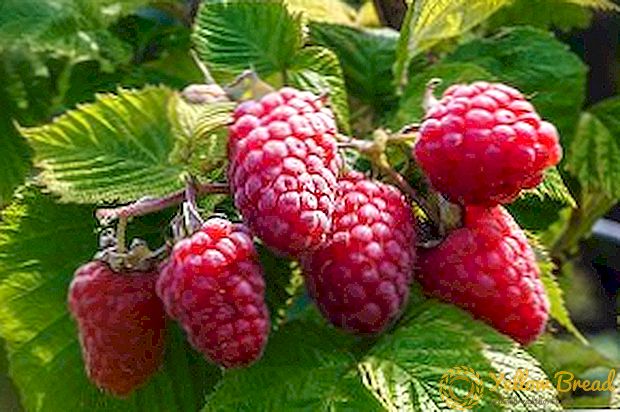
There are many varieties of raspberry, which are planted for various needs. Today we will discuss a wonderful variety that you can plant as both primary and secondary, increasing your varietal raspberry collection. You will learn what a tree raspberry "Monomakh's Hat" is, as well as features of planting and caring for it.
- Breeding history
- Description and characteristics of the variety
- Bushes
- Berries
- Yield
- Disease resistance
- Winter hardiness
- What to look for when buying seedlings
- Choosing the right place
- Lighting
- The soil
- Preparatory work
- Stepwise landing process
- Competent care - the key to a good harvest
- Watering and mulching
- Feedings
- Preventive treatment
- Support
- Pruning
- Shelter for the winter
Breeding history
The selection history of this variety is rather poor. As it was possible to establish, this is a young variety that was bred by the famous breeder Kazakov in the Moscow region.
Description and characteristics of the variety
The variety "Monomakh's Cap" has characteristics that make it easily recognizable. A detailed description will help you identify the pros and cons of this plant.

Bushes
The variety is very difficult to attribute to the shrubs, rather to the tree-like plants, because it forms the above-ground part in the form of a small tree.
Shoots plants are very long, drooping. Can grow up to 150 cm. On one bush grows up to 5 large shoots. The lower part of the stems is covered with stiff spines.
Berries
What should be paid attention to is berries.
You should start with the fact that this variety is remontantny, so you, under all conditions, can get 2 crops per year.
Unlike other varieties, truly gigantic fruits ripen on a tree, which can weigh up to 20-30 g, however, the average weight still doesn’t “leave” much from similar varieties and is 13-15 g. 
The berries are bright red, dense, difficult to separate from the legs. In shape resemble strawberries, but more elongated in length. Have a good aroma and high taste.
Yield
On average, from one bush to 5 kg of fruits per season are collected. Such is the yield in normal conditions in which the plant has enough water, heat and nutrition. If conditions are very favorable, the yield can reach up to 8 kg from one bush.
Raspberries "Monomakh's Cap", as a rule, is pollinated by insects, which gives an increase in productivity. If the cultivation is carried out in a greenhouse, it must be opened during flowering, so that insects have access to flowers. Manual pollination is very expensive, and self-pollination leaves much to be desired.

Disease resistance
Disease resistance is the weak side of this variety. "Monomakh's Cap" is affected by a large number of fungal diseases, if the weather contributes to this. Also, the variety is vulnerable to the main viral and bacterial diseases of raspberries.
However, it is worth remembering that remontant raspberries are updated annually, cutting off at the root. Thereby we remove all diseased and damaged shoots. That is, we do not need to worry about the affected above-ground parts, since it will still go under the knife.
Winter hardiness
Raspberry remontant "Monomakh's Cap" has good winter hardiness, withstanding temperatures down to -25˚С. However, if you do not cut the bushes to zero for the winter, it is better to cover them.
What to look for when buying seedlings
Choosing a sapling is not an easy task, which you need to approach with all seriousness, since, having bought a sickly sick bush, you will have to spend several times more money on it to start at least somehow bearing fruit. 
We begin traditionally with an inspection of the root system. It will be ideal if the rhizome is placed in the pot, as in this case the roots do not dry out and do not rot. If the roots are open, they should be checked for moisture, damage and the presence of pests. Be careful and try not to buy young plants, the roots of which are kept in the package, since there is a great chance of rotting.
From the rhizome smoothly go to the stem. It should be tight, without damage, small size.It is better, of course, if there will be several formed stems, but it is certainly not worth buying a huge bush, since it will not take root in a new place.
If between buying and planting a large gap in time, the roots definitely need prikopat.
Choosing the right place
After buying a tree raspberry you need to find the most optimal place on the site where your bush will feel best. 
Lighting
The lighting should be good, even the slightest shading will have an extremely negative impact on the growth and development of the young plant. You need to choose the southern open areas that are protected from the winds of buildings or other green spaces.
It is worth remembering that the lack of sunlight will affect equally strongly on the development of the plant itself, and on the taste and size of berries, so do not ignore the light factor.
The soil
Above, we wrote that the “Monomakh's Cap” is very vulnerable to fungal diseases, so the ground, first of all, should have excellent drainage properties, especially if there are prolonged rains in your region. 
In addition to moisture, the soil must be nutritious and have a neutral or slightly acid reaction. In the case of a strong deviation in acidity, it is worth producing a substrate.
Do not plant raspberries on sandstones or clay soils, as it will die there. In the first case, starvation will be observed, since the sandstones themselves are poor in humus, and on clay soils the water will stagnate regularly and all landings will simply rot under the influence of fungi.
Preparatory work
We begin to prepare the site and landing pits. By the way, planting can be carried out both in spring and in autumn, but you can deviate from this rule if you purchased a shrub whose roots are placed in the soil, that is, are in a flowerpot or box. In this case, the planting can be carried out throughout the entire growing season, the plant will quickly take root. 
We remove all trash, plant debris and, if necessary, prune the branches of neighboring plants so that they do not cast a shadow. We also check the soil for acidity and, if necessary, lime.
After harvesting, it is worth digging the soil on the spade bayonet to remove the rhizomes of weeds and saturate the soil with oxygen.
Landing can be carried out both in separate holes, and in trenches.The depth and width of the pit / trench - 50x50 cm. In this case, be sure to separate the top layer of soil from the lower, less fertile. We will use the upper one, and the lower one can be removed to another place. 
Before planting, measure the length of the shoots and, if they exceed 40 cm, trim them. Also it is necessary to completely remove the foliage to make it easier for the raspberries to settle down. All this is true for seedlings that have a bare root system. If you transplant a plant from a box or a pot, the leaves can not be removed.
Stepwise landing process
Begin landing with the preparation of dug holes. If the soil does not have the best drainage properties or there is often prolonged rain, you can slightly deepen the pit and lay out a 10 cm layer of drainage (expanded clay, small pebbles or crushed stone). Next, sprinkle drainage with a small layer of soil (no more than 5 cm) and spread the fertilizer. On average, for 1 square meter you need to put 15 kg of humus, 200 g of double superphosphate, 50 g of potash fertilizers and about 0.5 kg of wood ash. All fertilizers in the pit are thoroughly mixed and centered; on top of them, we pour a small earth mound in the shape of a pyramid. It should be in the center of the pit or a specific part of the trench.
After that, you can plant a sapling.Each individual bush is placed in a pit so that the center of the rhizome, from which the stem departs, is on the earthen slide. Next, straighten the roots so that they get the maximum suction area.
The distance between the plants in the row should be at least 1 m, and in the aisle - 1.5-2 m.
We begin to slowly fill the pit with the upper ground, which, as the pit is filled, should be slightly tamped. If we do not do this, then air cavities are formed near the roots, preventing the roots from contacting the soil and, accordingly, receiving moisture and nutrients.
When the hole is completely filled, finally tamp the soil and carefully look at what level is the root neck. It should be flush with the soil or slightly above the ground. If the root neck is under the ground, it must be opened, otherwise it will rot. 
After planting, each seedling shed enough water so that it reaches the depth of the roots. After it is possible to mulch pristvolnye roots with peat or humus.
Competent care - the key to a good harvest
Now that you have learned what the raspberry "Monomakh Hat" is like, as well as the sequence of planting and preparation of the site, it is worth discussing the care of the shrubs.
Watering and mulching
Watering
In this case, it all depends on many factors. The fact is that this raspberry variety, experiencing a lack of moisture, begins to form very small berries that will have a bad taste and can crumble. However, if there is a lot of moisture, the bush will conceive to "suffocate" from various fungal diseases. Yes, the soil should be wet, but it is important during the ripening of the fruit. Up to this point, it is not recommended to re-moisten the substrate, since you will have to either treat the plantings from fungal diseases or cut the bushes under the root for the winter to get rid of pathogenic organisms.
Mulching
To save the plant from the lack of moisture and strong temperature changes will help mulch. In this case, it has several functions: it protects the roots, interferes with the growth of weeds, does not allow moisture to evaporate quickly, decomposes and nourishes the raspberries when fertilizers laid down at planting are exhausted.For this reason, it is extremely important to mulch the landing; at the same time you need to use exactly the mulch that will rot and benefit. You can immediately forget about spunbond or sawdust, which is simply useless. Yes, the soil will not dry out and the weeds will not appear either, but you will have to add root dressings more often, and this is an extra waste of time.
Feedings
Despite the fact that the mulch nourishes the plant, it does not give him the necessary minerals, so they need to be made annually at the root.
In June, we need to feed the bushes with nitrogen, which will help to quickly build up the green part. We take nitrogen-containing mineral fertilizer (but not complex), counting 2 tbsp. l 10 liters of water and water our bushes.
In August, raspberries no longer need nitrogen, but potassium and phosphorus will help get more products of better quality. Take 50 g of each fertilizer and add raspberries under the bushes.
Preventive treatment
Above, we wrote that this variety is most often affected by fungal diseases. Also "Monomakh's Hat" suffers from bushy dwarfism, which leads to the shedding of berries and yellowing of leaves. Unfortunately, the disease is not treated.
Most fungal diseases and insect invasion can be “cured” with the help of proven remedies. If you notice that the leaves are covered with obscure spots, are crowded or fade - it means that a fungus has settled on the raspberries. To immediately destroy all fungal diseases, treat it with a complex fungicide. Also fungicides can be used for prophylaxis. Brush the bushes to flowering to prevent the onset of disease. 
As for insects, we will use complex insecticides, which can also be used for prevention purposes.
In order to prevent the occurrence of pests and diseases, it is necessary not to thicken the plantings, monitor the soil and soil moisture, remove sick and dry shoots in time, and also ensure that plants do not start fasting.
Most pests infect weak plants, others appear in conditions of extreme heat or sudden changes in temperature. It is for this reason that if you notice a sharp change in the weather or you think that adverse conditions have been established, check the raspberries for pests and diseases more often.
Support
Support raspberries needed in any case, even if you are going to cut it for the winter at the root. 
The fact is that the support not only helps to “hold” the plant, not allowing it to lie under the weight of green mass and fruits, but also makes it possible to differentiate the rows and reduce the thickening.
Standardly, near each bush, iron bars are inserted about 2 m in height. They pull the wire along the same way as for the grapes. Further to this wire, individual bushes can be tied up if they begin to lean towards the ground.
Without support, it is very difficult to maintain rows of large plantings and to ensure that all bushes grow straight, and not at an acute angle.
Pruning
There are several options for trimming, which we now talk about.
Above, we wrote that in order to destroy all diseases and pests, it is better to cut the raspberries for the winter under the root. Such pruning is carried out as soon as the first winter frosts begin. All shoots are cut to the ground level, and cut "hemp" sprinkled with humus or peat. When the snow falls, additionally cover them with raspberries.  Pruning is carried out in the spring, before bud breaks or immediately thereafter. All diseased, dry and frozen shoots are cut off, and very long ones are shortened (in case you didn’t cut for the winter at the root).
Pruning is carried out in the spring, before bud breaks or immediately thereafter. All diseased, dry and frozen shoots are cut off, and very long ones are shortened (in case you didn’t cut for the winter at the root).
It should be said separately about the early thaws, when the plant is most vulnerable, as it begins to produce leaves ahead of time. In this case, the stems can be cut to the minimum length in order to protect them from future frosts.
Shelter for the winter
If you live in a warm climate, and the bushes for the season were not affected by diseases, you can not cut them for the winter.
Each individual bush needs to be tied up and pinned to the ground. Next - cover it with spruce leaves or spunbond and wait for the first snow. As soon as the snow falls, we cover them with our bushes so that they do not freeze.

Now you know another representative of the repair raspberry, which gives a great tasty berry, suitable for transportation and short storage. It is worth noting that if you do not intend to devote a lot of time to raspberries every day, it is better to choose a less “delicate” variety that will require less care.Listen to our instructions and act according to the situation.

